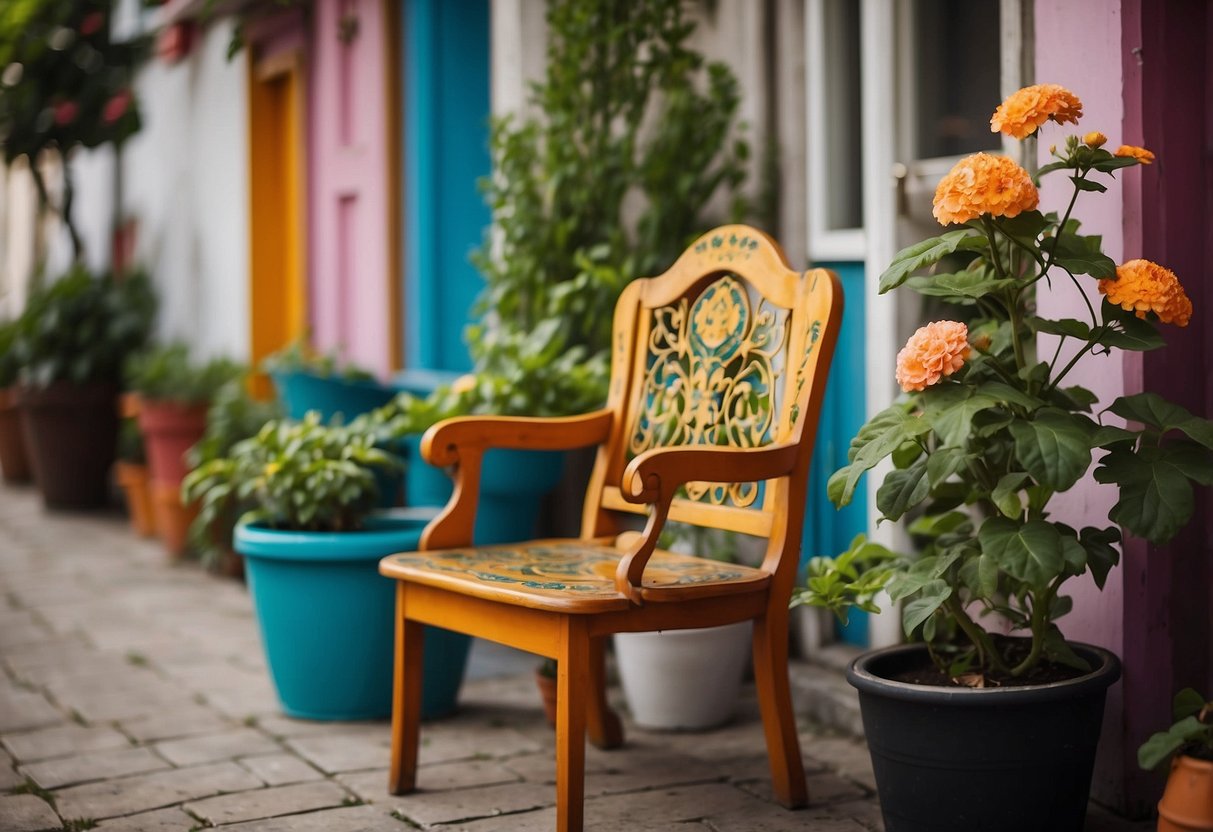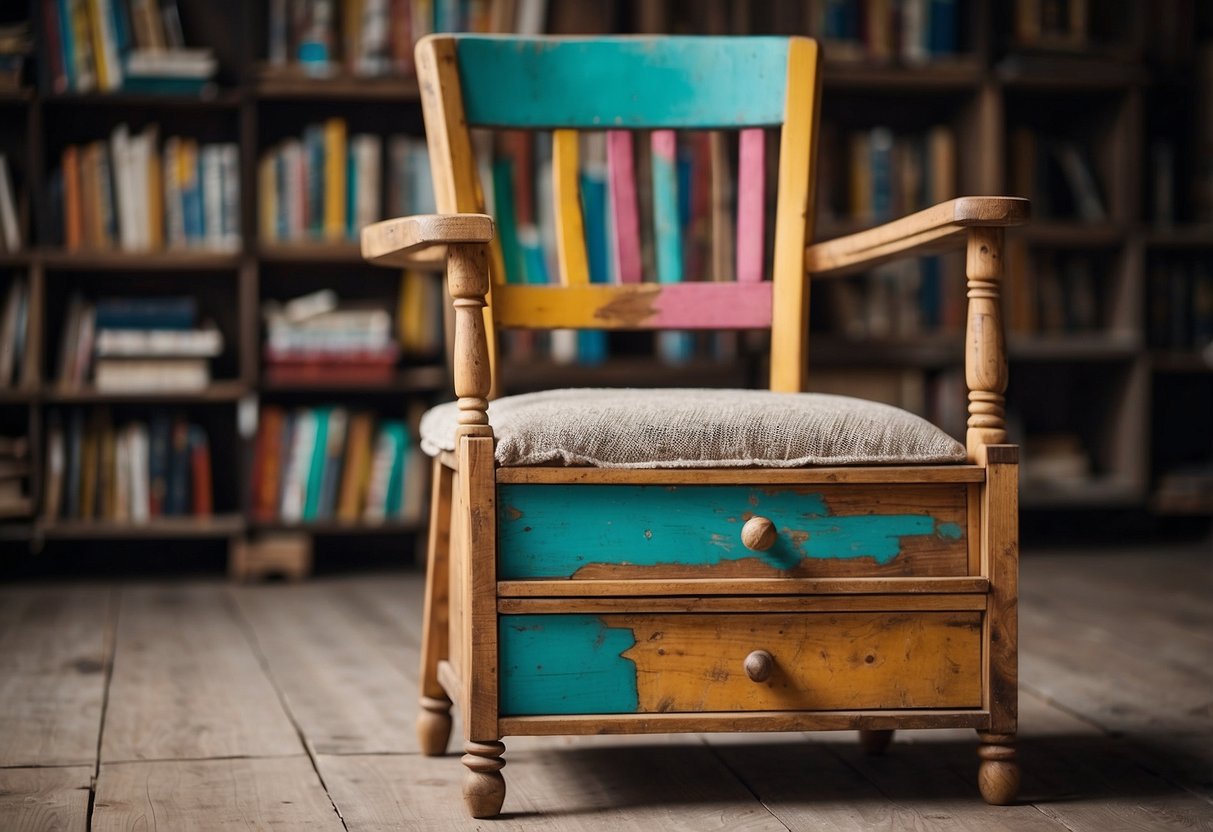
Getting Started with Upcycling
Upcycling old furniture can transform discarded pieces into stylish additions to your home. Knowing the right tools and materials, as well as how to choose suitable furniture, are crucial steps.
Tools and Materials
Having the right tools is essential for any upcycling project. Beginners should start with basic items like sandpaper, paintbrushes, and a screwdriver set. Sandpaper helps to smooth surfaces, while paintbrushes apply new colors. A screwdriver set is useful for disassembling pieces.
For more advanced projects, a hand drill, paint sprayer, and sewing kit can expand potential projects. Safety gear, including gloves and masks, protects from dust and fumes. It’s wise to pick non-toxic paints and stains. Quality materials ensure durable and appealing results.
Recycled and thrift store finds provide unique elements. Handles, knobs, and fabric remnants add personal touches. Selecting sustainable materials aligns with the ethos of upcycling. Stores specializing in reclaimed wood or eco-friendly products support environmentally conscious choices.
Choosing the Right Furniture
Selecting the right furniture is crucial for a successful upcycling project. It’s often wise to start with sturdy pieces. Solid wood is a favorite due to its longevity and ease of refinishing. Inspect furniture for structural integrity.
Thrift stores and garage sales offer a treasure trove of potential projects. Experienced DIY enthusiasts find inspiration in unusual shapes or historical details. Beginners might opt for smaller items, less daunting and quicker to complete.
Condition plays a role; pieces needing minimal repair save time and resources. Think creatively about the piece’s potential. An old dresser might become a bathroom vanity. Keep an open mind, allowing imagination to guide the selection process. A piece with good bones can always be transformed into something new.
Preparation Techniques
Properly preparing furniture before upcycling ensures a smooth and long-lasting finish. This step involves cleaning, repairing, sanding, and priming the furniture.
Cleaning and Repairs
Begin by thoroughly cleaning the furniture to remove dust, dirt, and grime. Use mild soap and warm water for general cleaning. For tougher stains or grease, a mixture of vinegar and water can be effective. Ensure the furniture is completely dry before proceeding.
Inspect the piece for any damage or loose joints. Tighten any screws or nails, and use wood glue for any joints that need reinforcement. If there are missing or damaged parts, try to replace them or repair with wood filler. This ensures the structure is solid before any sanding or priming.
Sanding and Priming
The next step is sanding. Use sandpaper to remove the old finish or paint and to smooth out any rough patches. Start with a coarser grit and move to a finer grit for a smooth finish. Sanding creates a surface that paint or finish can readily adhere to.
Once sanding is complete, it’s time to apply a primer. Priming seals the wood and provides a uniform base for the paint. Choose a primer that is suitable for the type of paint you plan to use. Apply one to two coats, allowing each coat to dry thoroughly. This step ensures an even and durable final finish.
Creative Upcycling Projects

Turning old furniture into something fresh and useful can be both rewarding and environmentally friendly. The projects require simple materials and tools and can breathe new life into worn-out pieces.
From Pallet to Coffee Table
Pallets are one of the most versatile materials for furniture upcycling. Start by selecting a sturdy, undamaged pallet. Clean and sand it to remove splinters or rough edges. An added stain or paint can give it a polished look.
Add four legs by attaching them to the pallet’s corners and ensure they’re level for stability.
A glass or wooden tabletop can be fixed on top for a smooth surface. Shelves made from the pallet slats can hold magazines or small items. This project is straightforward yet results in a stylish and functional coffee table.
Transforming Doors into Bookshelves
Old doors can find a new purpose as unique bookshelves. Choose a solid wood door with significant structural integrity. Sand and paint or stain the door to match your decor. Cut the door into sections to form the sides and shelves of the bookshelf.
Assemble using wood screws and brackets for extra strength.
Add extra touches like hooks or decorative handles for character. Shutters can be incorporated as side panels to enhance the aesthetic appeal. Position the bookshelf against a wall, securing it if needed, to create a sturdy, eye-catching piece perfect for displaying books and decor items.